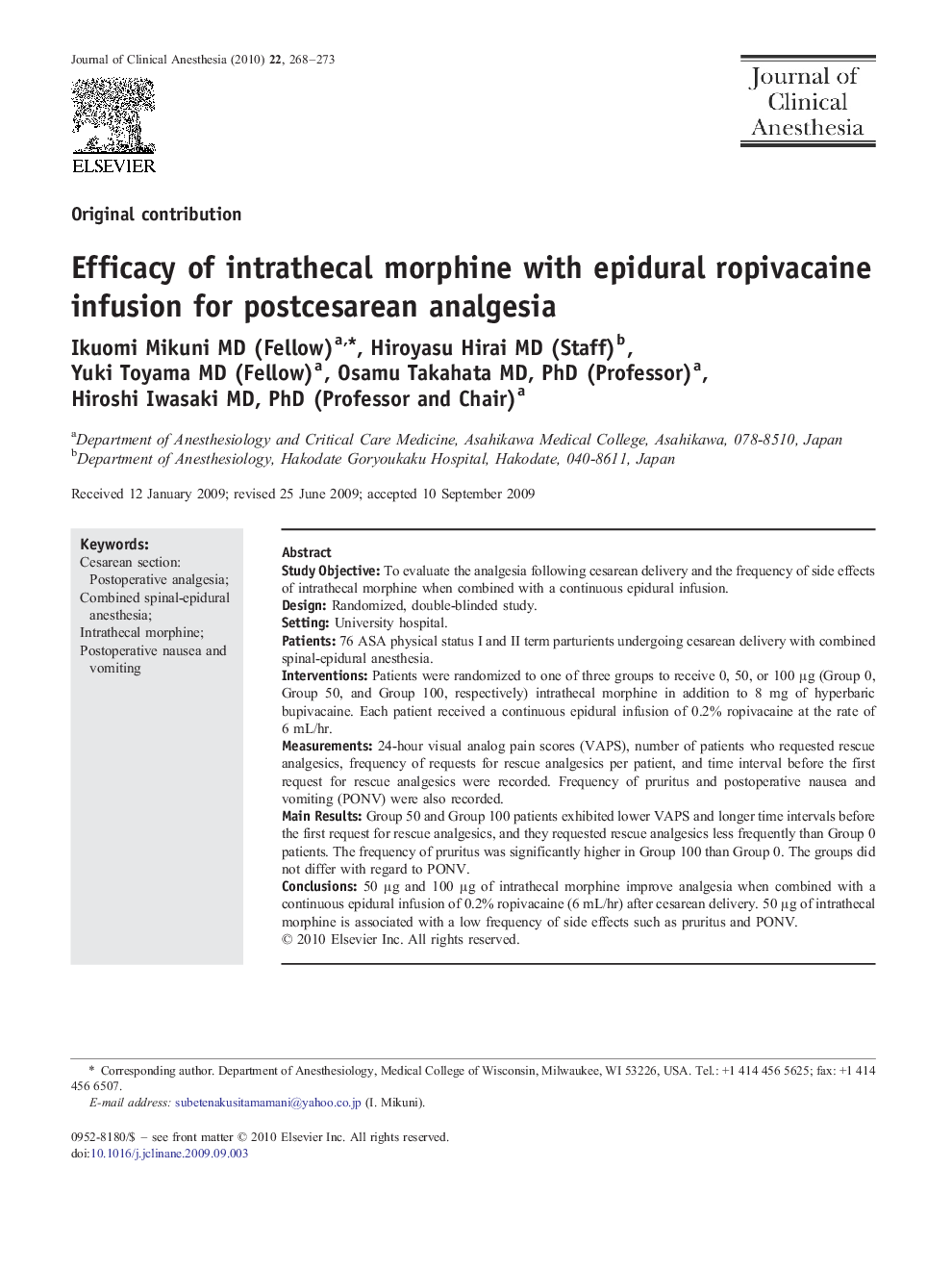| Article ID | Journal | Published Year | Pages | File Type |
|---|---|---|---|---|
| 2763294 | Journal of Clinical Anesthesia | 2010 | 6 Pages |
Study ObjectiveTo evaluate the analgesia following cesarean delivery and the frequency of side effects of intrathecal morphine when combined with a continuous epidural infusion.DesignRandomized, double-blinded study.SettingUniversity hospital.Patients76 ASA physical status I and II term parturients undergoing cesarean delivery with combined spinal-epidural anesthesia.InterventionsPatients were randomized to one of three groups to receive 0, 50, or 100 μg (Group 0, Group 50, and Group 100, respectively) intrathecal morphine in addition to 8 mg of hyperbaric bupivacaine. Each patient received a continuous epidural infusion of 0.2% ropivacaine at the rate of 6 mL/hr.Measurements24-hour visual analog pain scores (VAPS), number of patients who requested rescue analgesics, frequency of requests for rescue analgesics per patient, and time interval before the first request for rescue analgesics were recorded. Frequency of pruritus and postoperative nausea and vomiting (PONV) were also recorded.Main ResultsGroup 50 and Group 100 patients exhibited lower VAPS and longer time intervals before the first request for rescue analgesics, and they requested rescue analgesics less frequently than Group 0 patients. The frequency of pruritus was significantly higher in Group 100 than Group 0. The groups did not differ with regard to PONV.Conclusions50 μg and 100 μg of intrathecal morphine improve analgesia when combined with a continuous epidural infusion of 0.2% ropivacaine (6 mL/hr) after cesarean delivery. 50 μg of intrathecal morphine is associated with a low frequency of side effects such as pruritus and PONV.
